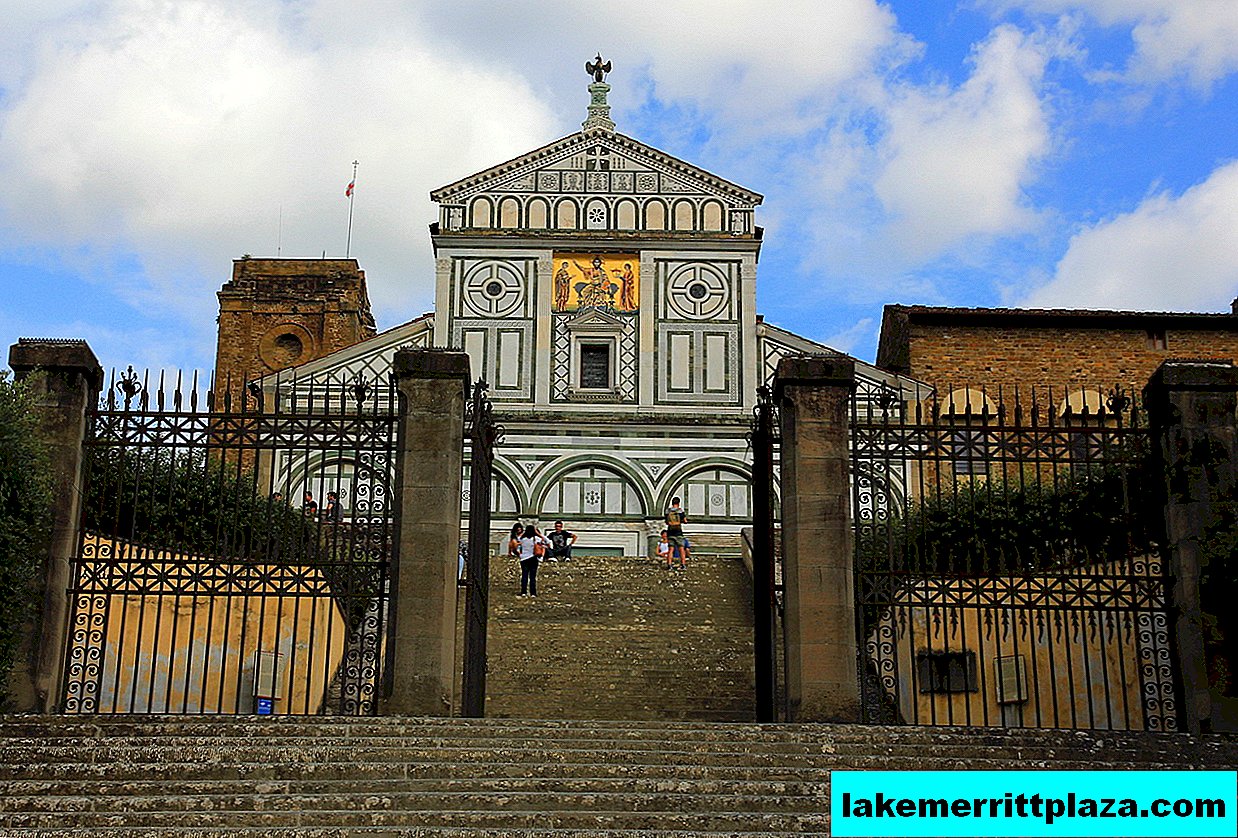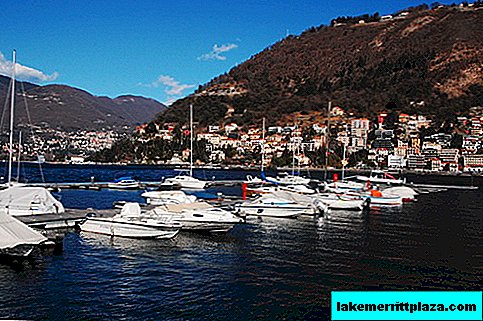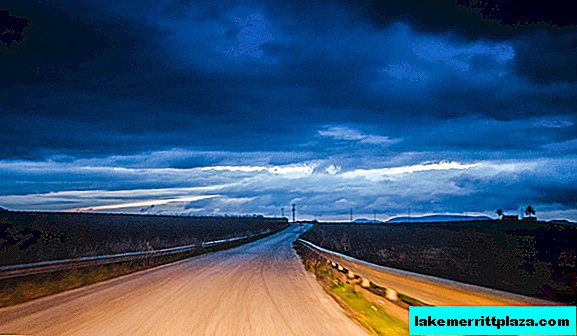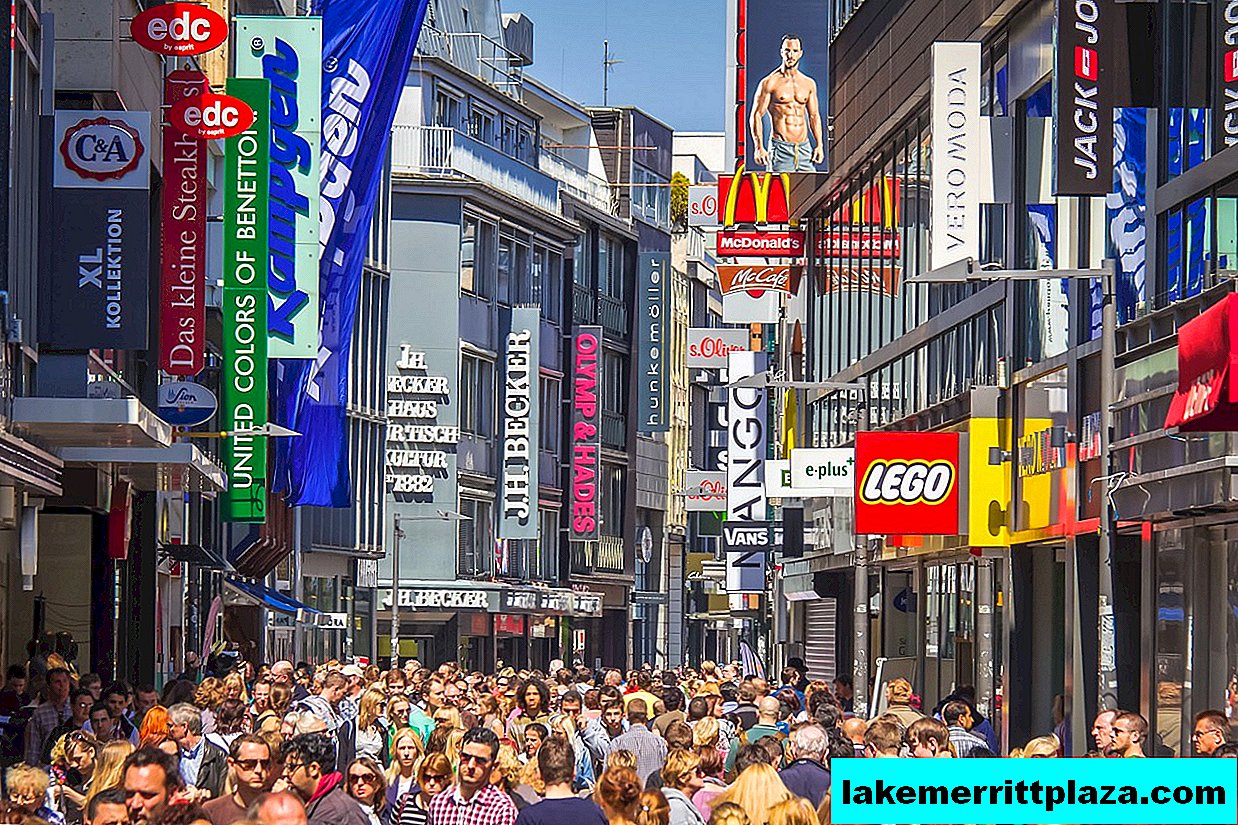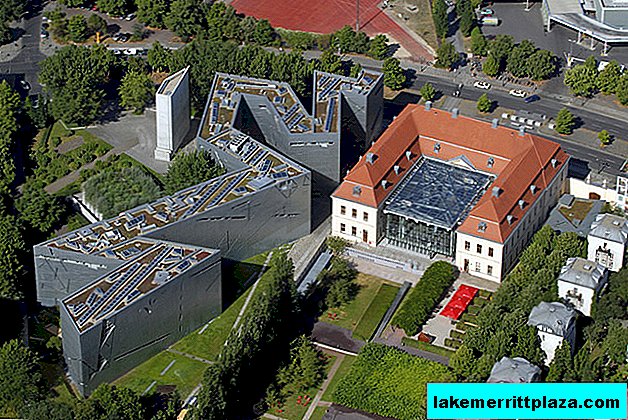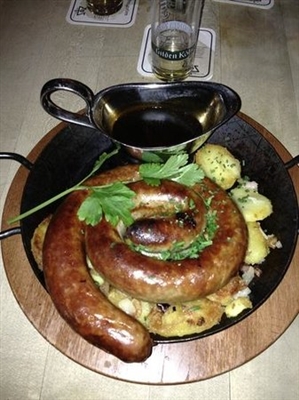"Tastes are different!" - says an English proverb. The Italian product that will be discussed now confirms it unsurpassed. And, if you experience slight discomfort from moldy cheeses, then at the sight of Casu marzu you will be swooned. The homeland of Kasu Marzu cheese is the island of Sardinia (Sardegna). In the literal translation, his name sounds like "rotten cheese." It is filled with thousands of cheese fly larvae. Surprisingly, it is a fact: they eat it! Many Sardinians consider casu marza to be an excellent delicacy. If you are still feeling, then let's get acquainted with the "live" cheese.
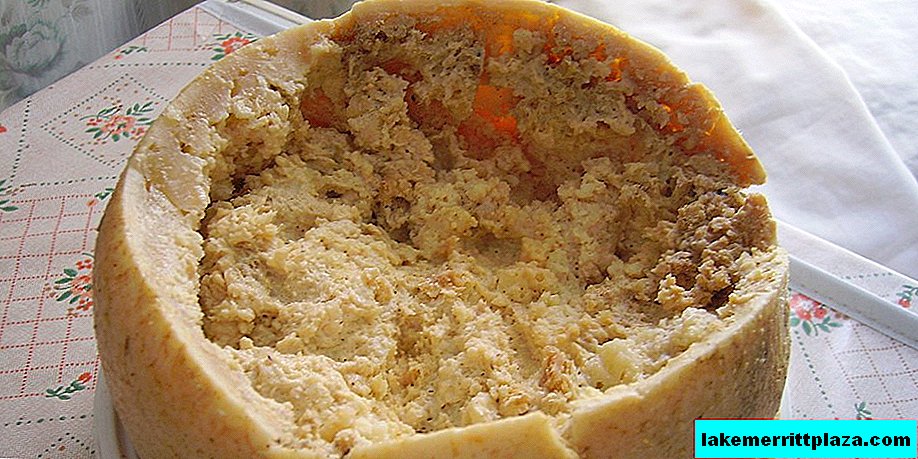
Origin version
The story of Kasu Marz is a mystery covered in darkness. There is not a single date, not a single mention of cheese in historical documents. But the old-timers of Sardinia, who store information that is passed on from mouth to mouth from generation to generation, claim that this product is more than one hundred years old.
There is a version that Kasu marzu was born as a result of an oversight when cooking pecorino. Not noticing the eggs of the cheese fly, the heads were sent to ripen, after some time they found "rotten cheese". Naturally, in times not differing in the abundance of products, not only conscience, but also the stomach did not allow to throw out the spoiled batch. The most courageous cheese-makers risked tasting it and were delighted with the new product from sheep’s milk. And so began the mass, if I may say so, production of Kasu Marz.
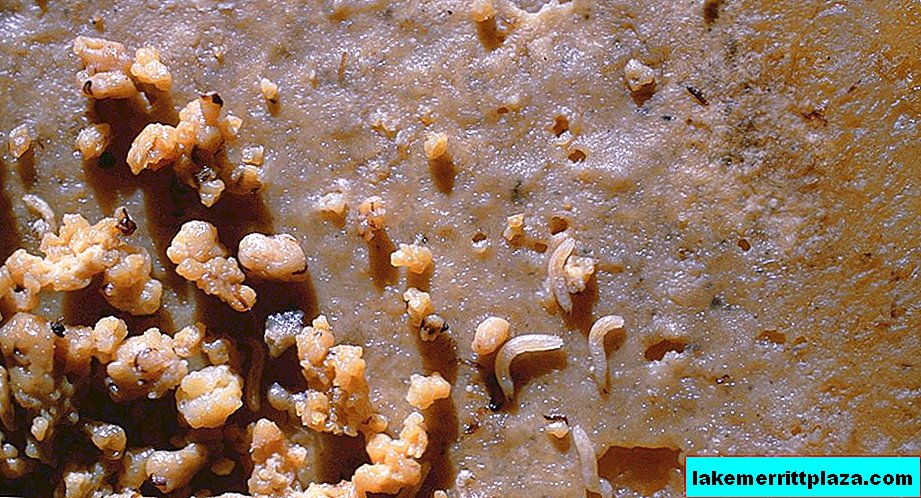
It is also suggested that the preparation of pecorino at home was always accompanied by the receipt of kasu marzu, since in the summer period in villages about 50% of the heads were always affected by the larvae of the cheese fly. Therefore, with a significant degree of certainty, we can say that "rotten cheese" has a thousand-year history.
Based on the rules of sanitation and hygiene, the European Union banned the production and sale of Kasu Marz. In order to protect the cheese, the Italian Ministry of Agriculture and Forestry in 2004 included it in the "list of traditional Italian food products", consisting of 4,006 items. This document allows manufacturers to depart from sanitary standards, since the product has been on the market for more than 25 years.
In addition, in 2005, some Sardinian farmers, together with the staff of the veterinary faculty of the University of Sassari (Sassari), developed and implemented the cultivation of cheese flies (Piophila casei) in an artificial environment. Thus, manufacturers were able to completely control the manufacturing process and provide all sanitary and hygienic guarantees.
The last attempt to approve their goods was the filing by the Sardinian cheese makers of the application to the European Commission for assigning Dop status to Kasu Marz. Today, the EU is still adamant.
Kasu marzu differs from other Italian cheeses in that it has several variants of names: Casu frazigu, Casu becciu, Casu fattittu, Hasu muhidu, Formaggio marcio.
In 2009, it was listed in the Guinness Book of Records as "the most dangerous cheese in the world." Its authors talk about how the product can cause vomiting, abdominal pain and bloody diarrhea. In fact, there is no evidence of gastrointestinal disorders associated with the use of kasu marzu.
How to cook
The first step in the production of kasu marzu is the preparation of pecorino sardo in the DOP category. You can read about how sheep cheeses are made in our article "Pecorino - Italian cheese made from sheep’s milk."
The heads that go to get kasu marzu are kept in brine for fewer days than for pecorino. During this time, the cheese absorbs such an amount of salt that does not deter flies, but prevents the development of pathogenic bacteria.
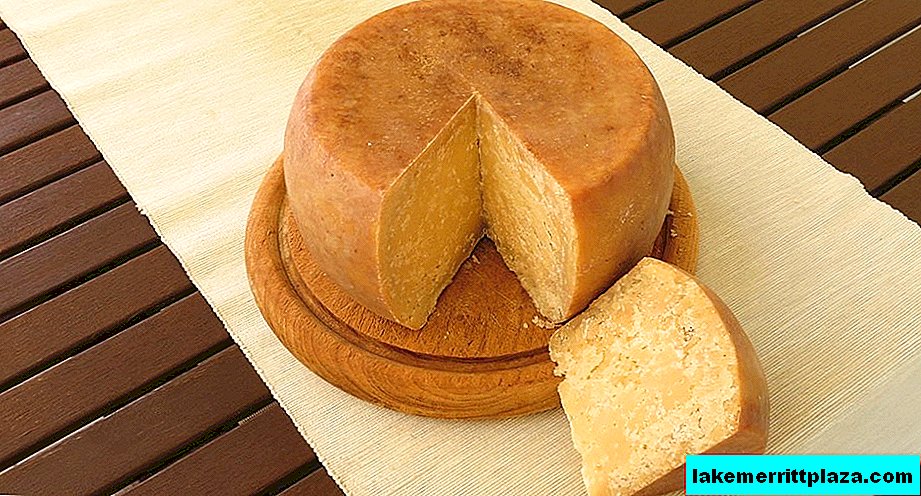
Making small holes in the cheese crust, some manufacturers drip a few drops of olive oil into them for the double purpose of softening the surface and attracting flies. Next, the future Kasu Marza is left in open places for the “attack” of the Piophila Casei. At this time, do not turn their heads. They are stacked on top of each other when a sufficient number of eggs are laid on the cheese to ensure the transfer of larvae from one form to another. The process of fermentation of cheese by insects lasts from 3 to 6 months. Its end is determined by the number of larvae and texture, cutting off the upper crust (cheese cap).
Kasu marzu production is mainly located in the villages of Sardinia and lasts from late spring to late autumn. This is the time of the most suitable temperature for the development of cheese fly larvae.
By the way, Kasu Marzu is not the only larval cheese in Italy, but the most famous. In the expanses of the republic you can meet "Casu du quagghiu" in Calabria, "Furmai nis" in Emilia-Romagna, "Marcetto" in Abruzzo, "Bross ch'a marcia" in Piedmont ( Piemonte).
Characteristics and methods of use
Outwardly, the heads of kasu marza are very similar to pecorino. They have a cylindrical shape with convex sidewalls and flat faces and weigh from 2 to 4 kg. Depending on the number of insects, the consistency of the cheese may be thicker, pasty or soft, creamy. For mature versions, the texture is very delicate with a liquid called lagrima, which means “tear”. The mass is filled with translucent larvae about 8 mm long.
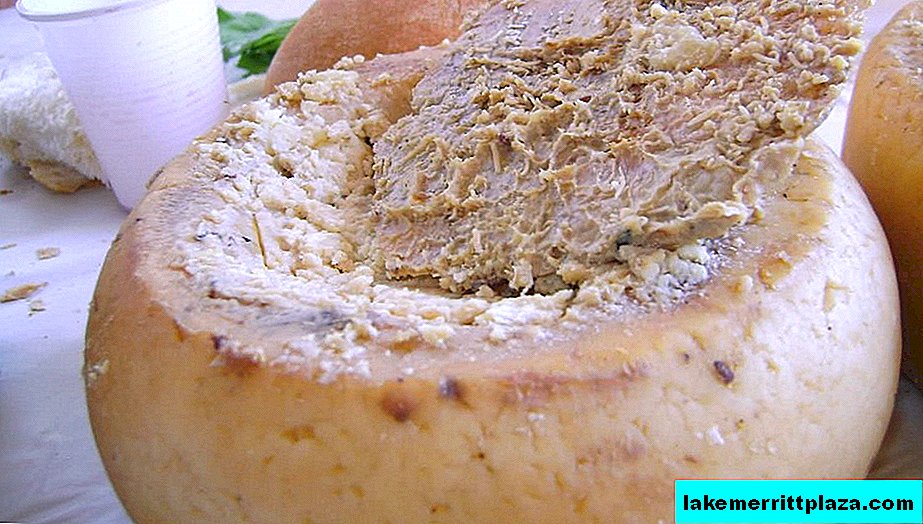
Kasu Marzu is distinguished by a sharp aroma reminiscent of Pecorino Sardo Maturo, but much brighter. The taste is spicy, burning. Cheese leaves a long finish, lasting several hours.
Sardinians do not eat Kasu Marz if the larvae in it have already died, considering such a product toxic. If the cheese is ready to eat, and the consistency is still quite dense, then it is cut into slices and put on a Sardinian tortilla (pane carasau) and served with strong red wine. Soft casa marza is taken out with a spoon and spread on bread.
Some people prefer to eat cheese without paying attention to the larvae. The worms are quite mobile, they bounce to a distance of 15 cm. Therefore, the Sardinians hold their hands above the sandwich to prevent them from getting into the face.
There are gourmets who get rid of insects. One of the methods invented by tourists is to place a serving of cheese in a paper bag and grip it tightly, blocking the access of oxygen. The larvae begin to jump randomly, drumming on paper. When the knock subsides, the packet is opened and the dead worms calmly removed.
It is worth noting that the inhabitants of the island, considering the kasu marzu an excellent delicacy, often serve it at festive tables for weddings and birthdays.
Calorie content, benefits and possible harm
The exact nutritional value of Kasu Marz is unknown. Knowing that cheese is made from whole sheep’s milk, You can limit the range of its calorie content from 350 to 400 kcal per 100 g.
Of course, like any cheese, kasu marzu is a source of proteins (indispensable building blocks for the body) and calcium, which is necessary for healthy bones, teeth, muscles, and for conducting impulses of the nervous system.
In Sardinia, they say that "rotten cheese" is an excellent aphrodisiac, that is, it increases sexual desire.
Often you can find information about the dangers of cheese, which consists in:
- Allergic reactions;
- Toxic poisoning;
- Intestinal infections;
- Damage to the stomach and intestinal walls.
However, it should be noted that there is not a single documentary evidence of such consequences. Everything is based only on the assumptions of epidemiologists.
Price in Italy
You will not be able to purchase Kasu marza by simply arriving in Italy and going to any grocery store. The sale of cheese is prohibited, so you need to look for it on the so-called "black market". In order for them to feast, they will have to go to Sardinia in distant villages. Only there, your searches can succeed, while it is possible to buy it at a price twice the cost of pecorino - 30-50 Euro per kg. Here he is - "rotten delicacy"!
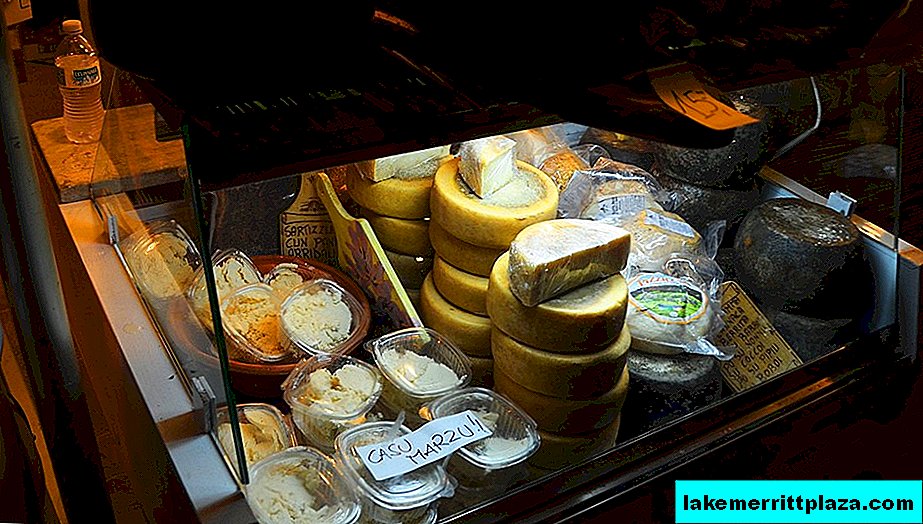
Now you have enough information at your disposal to decide for yourself whether there is "rotten cheese". If you like to be surprised and amaze, or an extreme gourmet lives in you, then you just need a vacation in Italy. Live your impressions, love beautifully, travel in Italian and remember: “That which does not kill us makes you stronger!” Aye to Sardinia for eternal youth!

